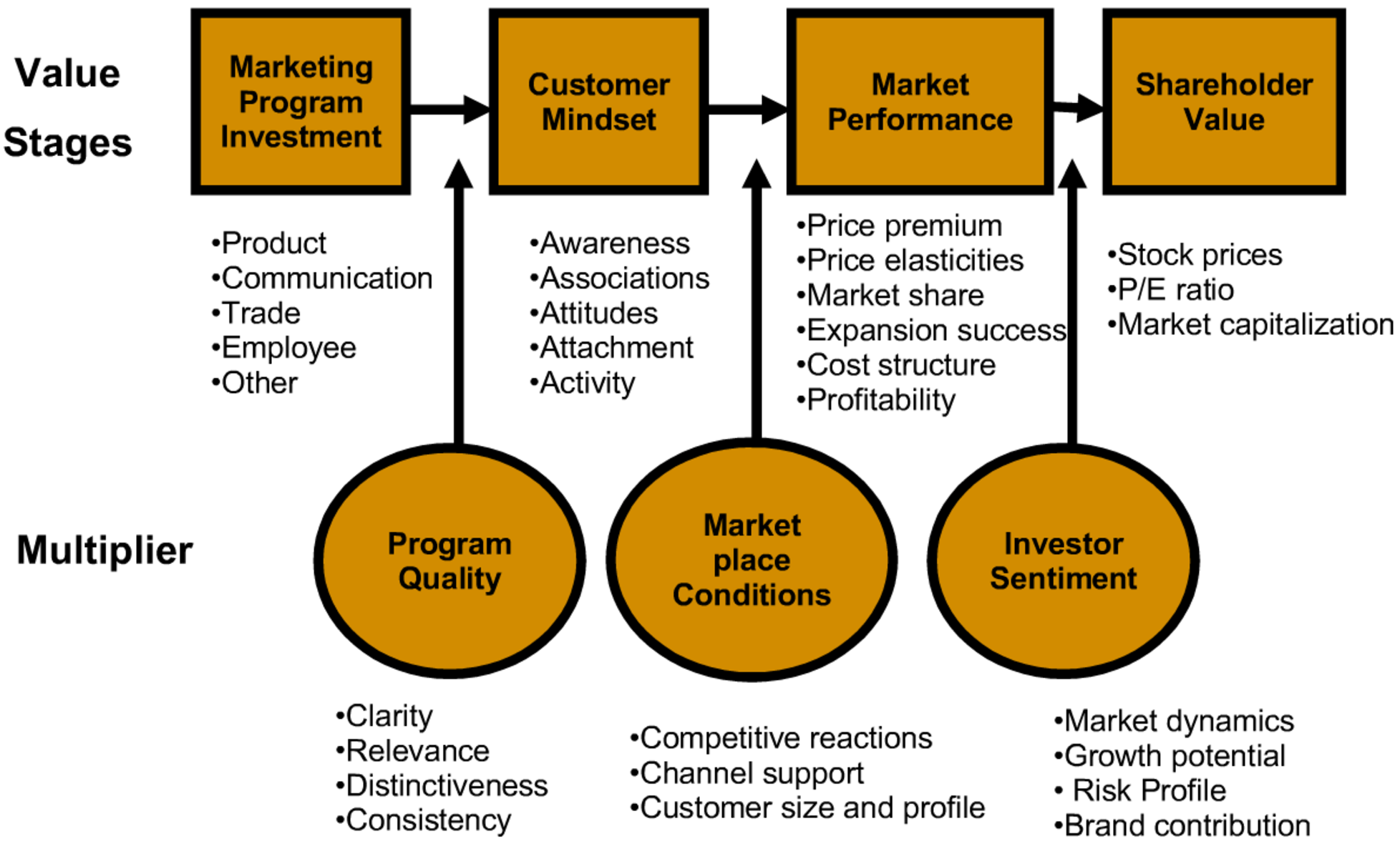The importance of branding has been constantly increasing for the past few decades. Brand managers along with marketing managers work side by side to build and create strong branding. But in contrast, not many people know the long-tail effect of branding, causing them to cast it aside. But why should we invest in branding? because life is full of decisions.
We should invest in branding, because life is full of decisions.

We make decisions on a daily basis. In fact, tons of them. On average, adults make thirty-five thousand decisions each day. Yes, 35,000.
These numbers are made up of different kinds of decision we take. For example:
- What should I eat?
- What should I wear today?
- Which directions should I take to the office?
- How should I act and behave in front of people?
- Should I give my seat to this elderly person?
.
.
.
Until this,
What should I purchase?
Which product do I need?
Which one is the best for me?
We are all busy. The average adult spends half of their day for work. Therefore, we crave efficiency, this includes quick decision-making. Whatever it is, even when we purchase something. That is when branding comes into play. Brand managers agree that one of a company’s most valuable assets are the intangible assets. Assets that you have invested not on the product itself, but more to an abstract idea placed inside your customer's mind.
Without realising, you can name several brands that you use and understand how its functionality and price point is similar to the other options.
Why? In most cases, brands play a bigger role in a customer’s purchasing pattern rather than the product itself. Thus, continuous efforts of brand building in a product creates and register associations, element's, identity and its personality to our minds.
Not that the product is not important, in fact, it's the core and the heart of your business. However, in this era, consumers can hardly differentiate one product from another. The factor that stands out among these different products is the brand itself. Name similar products and the benefits you will gain, and choose what you would much prefer, for example:
Apple vs Samsung, Mercedes vs BMW, Perodua vs Proton
Your choices are more likely based on the brands itself, how you perceive the product in terms of its performance and its image.
Name one brand in a category. Any brand that comes first in mind, it has the strong presence in your brain.
It is important for both product and services companies to invest in brands. But before investing in a marketing campaign to leverage your brand, it is important to know how brands create value.
How Do Brands Create Value?
The Keller and Lehmann (2003) study will explain so, as displayed on this linear framework below:

There are four value stages in total, and there are key elements that build up each value stage. It is a linear process, therefore, each value stage influences the next. The effect on each following step is determined by its multiplier. For example, in the first stage, Marketing Program Investment will affect Customer Mindset. However, program quality of the marketing program investment determines whether it creates a desirable customer mindset. It can also go the other way around, it's possible that your brand will get an undesirable customer’s mindset if your marketing program quality is not good enough.
Marketing Program Investment

Brand value chain starts with marketing program investment. It consists of different types of investments such as product, communications, trade, and employees. Your marketing program investment will directly affect your customer’s mindset, which will be discussed in the next step. Take note that a customer's mindset cannot be built overnight, even with the extensive effort on single marketing program investment, it still requires time. Your customers see a pattern of your marketing program, and you should identify how your customers perceive your brand. Therefore, you should work on the continuous clear-cut effort from your marketing program investment.
For you to leverage your marketing program investment, you need to know precisely the following:
- How To Communicate With Your Consumers
- Which Channels to Use for Communication
- Your Employee’s Methods of Marketing Communication, both online and offline
Multiplier - Program Quality
Your marketing program investment effect will be greatly influenced by your program quality, the following points below are the key factors that you should look into:
Clarity
This refers to the marketing campaign’s messages and its forms of communications. It is critical to tailor marketing messages to your customers and their best abilities to understand and interpret the message as intended.
Relevance
Marketing program should be relevant to your customers. You should identify the customer's pain points, and inform them of the reasons to buy you product or service and how it proves relevant to their lives.
Distinctiveness
There are countless marketing campaigns available, your marketing program should be distinguishable from the other competitors from customer’s standpoint in order to set you apart from the others and be more attractive.
Consistency
Your marketing program should be consistent and include integration from different channels that the program utilises.
Customer Mindset

These marketing program investments will influence your customer’s mindset. Keller’s (2001) customers-based brand equity model, a four building block of brand equities from your customer is used to evaluate their mindset. In short, customer’s mindset consists of awareness, associations, attitudes, attachment and activity. This four building block is a bottom-up approach, meaning each customer begins from the bottom with awareness and end with attachment and activity.
Awareness
Awareness consists of depth, breadth and usage of the brand. Depth and breadth refers to the ability of the customers to recall and recognise the brand whilst product usage refers to how and when the product or service can be used.
Associations
It refers to the connections and relationships of one’s brand to the external parts. Associations could be positive or negative. Therefore, each brand has to identify and communicate with its strength, favorability, and uniqueness (SFU) of the brand’s perceived attributes and benefits.
Attitudes
Attitudes towards the brand is the response of the brand’s campaign and the actual performance of the product. There should be continuous evaluation on a product’s performance in order to create better review on a customer’s perspective, thus resulting in positive brand attitude.
Attachment
When both product and the brand successfully satisfy or has managed to exceed customer’s expectations, it attracts customers to become loyal and attached to the brand.
Activity
This refers to the extent of customers who already use the brand and talk to their peers about it, seeking out information about the brand accordingly.
To try out the customer-based brand building blocks, here are a few example questions:
-
What do you think is the best brand for a car? (Whether you own one or plan to own one)
-
Why do you think it is the best car? Will it last for years without any problems?
-
What do you associate the brand with? Luxuriousness? Prestigiousness? Would that particular be fit for any formal events?
-
Have you started talking to your friends about that brand? What are their views on it? Would they be thinking the same? Or perhaps it will lead to an argument due to differing point of views.
The answers to these questions will allow you to identify how a brand affects a customer’s perceptions and decision. A customer’s mindset could also be bettered with continuous investment in branding and product performance.
Multiplier - Marketplace Conditions
Marketplace conditions are the external factors that affect the overall performance of a marketing program investment.
Competitive Reactions
A competitor’s reaction to one’s marketing campaign will affect the overall performance of a marketing program investment.
Channel Support
A great marketing investment is one that utilises every available channel, online and offline. Companies can also use its marketing partners to reinforce its marketing program investment, adding headcounts of audiences exposed to the marketing program investment.
Customer Size and Profile
The bigger the customer size, the more investment there should be in marketing programs.
Market Performance

Market performance is the result of a positive customer’s mindset due to the increase in the sales of the product or service.
Price Premium and Price Elasticities
Companies can charge for a premium price when customers have a strong positive mindset towards the brand. In addition, if the company decides to increase the price of their product or service, it will not affect the purchasing behavior of their customers.
Market Share
The total sum of loyal customers will affect the greater share of the total addressable market.
Brand expansion success
A successful marketing program investment, directed to a brand extension, will provide additional opportunities for companies to add a product line or depth, thus adding on a new revenue stream.
Cost Structure
A successful marketing program investment will also reduce further marketing investment costs as the brand has a strong presence in the customer’s mind.
Profitability
Creating a strong brand gives companies a competitive edge and stretches the profitability of the company.
Multiplier - Investor Sentiment
Market performance will affect the value of the shareholder. However, investor sentiment will greatly influence its effect. There are numbers of considerations used by both financial analysts and investors to evaluate the brand and its investment decisions: Market dynamics, growth potential of the brand, risk profile and a brand’s overall contributions to company’s portfolio
Shareholder Value

Market performance will affect the shareholder's value. With given information about the brand and several other considerations, the financial marketplace will then drive arguments and evaluations that will influence financial implications of the value of the brand. The three core indicators include how marketing program investments will influence the stock price, the ratio of price/earning and a company’s total market capitalisation.

